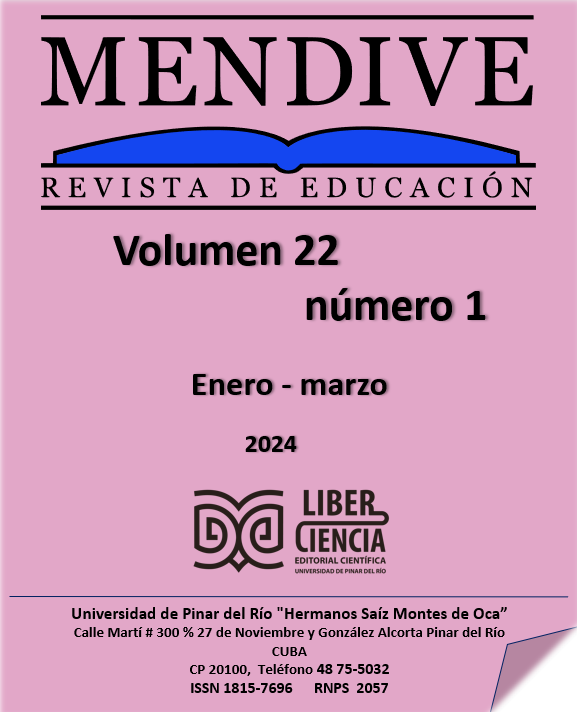Creativity methodologies and the elaboration of texts in regular basic education
Main Article Content
Abstract
The essential purpose of this study is to confirm the link through creativity methodologies and the elaboration of texts for students of Education Basic Regular-EBR (secondary level). The treatment and structure of this study adopted the type of descriptive - correlational research by means of methodological approaches in writing contributing to strengthen their imagination and creativity for the elaboration of texts, being the sample of 88 students, seventh cycle of the secondary level- EBR, followed by achieving results of methodologies of creativity more constant, these are the instructional ones, besides committing to articulate the solidification of their formation. The degree of knowledge in the elaboration of texts of main impact is the procedure of textualization in the dimensions, illustration and methodological variety of imagination and boom in the elaboration of texts in students of EBR in addition it was determined to have linkage.
Downloads
Article Details

This work is licensed under a Creative Commons Attribution-NonCommercial 4.0 International License.
References
Aguilar, G. (2018). Desarrollo Humano y Creatividad. Una aproximación humanística. El Artista, (15). https://www.redalyc.org/journal/874/87457958002/87457958002.pdf
Arroyo, M. & Carrión, J. (2021). Estrategias de lectoescritura para el desarrollo de la escritura creativa. Polo del Conocimiento, 6(12), DOI: 10.23857/pc.v6i12.3378
Caldwell, H., Whewell, E., & Heaton, R. (2020). The impact of visual posts on creative thinking and knowledge building in an online community of educators. Thinking Skills and Creativity, 36, https://doi.org/10.1016/j.tsc.2020.100647
Callejas, J., & Méndez, M. (2019). Estrategias didácticas basadas en un objeto virtual de aprendizaje para apoyar los procesos de comprensión lectora. Universidad Cooperativa de Colombia, https://bit.ly/3pcJ5eH.
Camargo Zamata, P. M. (2017). Creatividad: herramienta didáctica para los docentes. Educación, (23), 35–39. https://doi.org/10.33539/educacion.2017.n23.1184
Carvalho, T. de C. M, Fleith, D. S. y Almeida, L. S. (2021). Desarrollo del pensamiento creativo en el ámbito educativo. Revista Latinoamericana de Estudios Educativos, 17(1), 164-187. https://doi.org/10.17151/rlee.2021.17.1.9
CERLALC (2022). Red Iberoamericana de Responsables de Políticas y Planes de Lectura. CERLALC. https://cerlalc.org/redplanes/
Crespo, A. (2018). Creatividad y Educación: prácticas docentes para fomentar la creatividad en niños de nivel inicial. Santa Fé, Argentina: Grupo Compás.
Hernández-Sampieri, R., & Mendoza-Torres, C. (2018). Metodología de la Investigación: las rutas cuantitativa, cualitativa y mixta. Mexico: McGraw-Hill Interamericana Editores, S.A. de C. V.
Herrera, C. & Saltos, G. & Abaco, E. (2022). Producción de textos mediante entornos educativos virtuales del software Ardora: Una experiencia de aplicación en pandemia. Didacticae, (11), 21-41. https://revistes.ub.edu/index.php/didacticae/article/view/34225/37238
Leonetty, M. (2018). Aprovechar la gramática para mejorar la redacción: los sujetos tácitos. Revista de Gramática orientadas a las Competencias, 1(1), 1-28. https://ddd.uab.cat/pub/regroc/regroc_a2018v1n1/regroc_a2018v1n1p237.pdf
Ministerio de Educación, Peru. (2018). Resultados evaluacion muestral 2018. Ministerio de Educación:Peru. http://umc.minedu.gob.pe/wp-content/uploads/2019/04/Presentaci%C3%B3n-de-resultados-de-la-EM-2018.pdf
Rodríguez-Saltos, E. R., Vallejo-Loor, B. M., Yenchong-Meza, W. E., & Ponce-Solórzano, M. J. (2020). Importancia de la psicopedagogía y el aprendizaje creativo. Dominio De Las Ciencias, 6(3), 564–581. https://doi.org/10.23857/dc.v6i3.1300
Silva, E. (2019). Proceso de producción textual en un taller de escritura virtual para estudiantes de quinto grado. Panorama, 13(2), 51–58. https://doi.org/10.15765/pnrm.v13i25.1295
UNIR - Universidad Internacional de La Rioja. (2020). ¿Cómo ser psicopedagogo?: requisitos y estudios necesarios. España: Universidad Internacional de La Rioja. https://www.unir.net/educacion/revista/como-ser-psicopedagogo/
Velásquez, E. (2022). Pensamiento creativo docente. Una mirada sistemática. Rev. Innova Educ., 4(1), https://revistainnovaeducacion.com/index.php/rie/article/view/548


